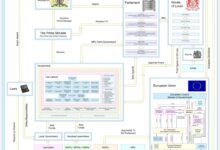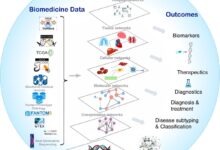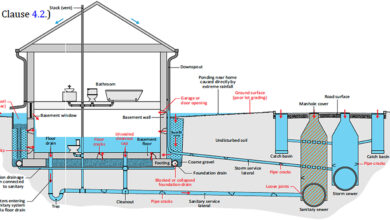System Development Life Cycle: 7 Powerful Stages Revealed
Ever wondered how complex software systems come to life? It all starts with a structured roadmap known as the system development life cycle. This proven framework guides teams from idea to deployment—and beyond.
What Is the System Development Life Cycle?

The system development life cycle (SDLC) is a comprehensive framework used to design, develop, test, and deploy information systems efficiently. It provides a structured approach that ensures software quality, meets user requirements, and stays within budget and time constraints. Originally developed for large-scale government and enterprise projects, SDLC has evolved into a cornerstone of modern software engineering.
Definition and Core Purpose
At its core, the system development life cycle is a step-by-step process for building robust, scalable, and maintainable systems. Its primary goal is to produce high-quality software that fulfills customer expectations while minimizing risks and development costs. By breaking down the development process into distinct phases, SDLC allows teams to manage complexity, track progress, and maintain accountability throughout the project lifecycle.
- Ensures alignment between business goals and technical execution
- Facilitates early detection of flaws and misalignments
- Provides a clear roadmap for stakeholders and developers alike
Historical Evolution of SDLC
The concept of the system development life cycle dates back to the 1960s when mainframe computing required rigorous planning due to limited resources and high costs. Early versions were heavily documentation-driven and followed a linear model—most famously, the Waterfall methodology. As technology advanced and user demands grew more dynamic, SDLC models adapted to include iterative and agile approaches.
According to the IEEE Computer Society, the formalization of SDLC in the 1970s helped standardize software development practices across industries. Over time, methodologies like Spiral, V-Model, Agile, and DevOps emerged, each refining how the system development life cycle could be applied in different contexts—from banking systems to mobile applications.
“The SDLC is not just a technical roadmap—it’s a management tool that brings predictability to an inherently creative process.” — Dr. Barry Boehm, Software Engineering Pioneer
The 7 Key Stages of the System Development Life Cycle
While variations exist depending on the methodology used, most implementations of the system development life cycle follow seven fundamental stages. Each stage plays a critical role in ensuring the final product is functional, secure, and aligned with user needs. Skipping or rushing through any phase can lead to costly rework, security vulnerabilities, or project failure.
1. Planning and Requirement Analysis
This initial phase sets the foundation for the entire project. It involves gathering detailed requirements from stakeholders, defining project scope, identifying constraints, and assessing feasibility. A thorough requirement analysis helps prevent scope creep and ensures all parties have a shared understanding of the system’s goals.
- Conduct stakeholder interviews and surveys
- Document functional and non-functional requirements
- Perform cost-benefit analysis and risk assessment
Tools like SWOT analysis (Strengths, Weaknesses, Opportunities, Threats) and MoSCoW prioritization (Must-have, Should-have, Could-have, Won’t-have) are often used during this stage. The output typically includes a Software Requirements Specification (SRS) document, which serves as a contract between developers and clients.
2. System Design
Once requirements are finalized, the next step in the system development life cycle is designing the architecture of the system. This phase translates user needs into technical specifications, outlining how the system will function, what technologies will be used, and how components will interact.
- Create high-level system architecture diagrams
- Define data models and database schemas
- Select programming languages, frameworks, and platforms
Design documents produced here guide developers during implementation. Two common design approaches include:
- High-Level Design (HLD): Focuses on system architecture, module interactions, and technology stack.
- Low-Level Design (LLD): Delves into class structures, algorithms, and interface details.
For example, a banking application might use microservices architecture with REST APIs, PostgreSQL for data storage, and OAuth2 for authentication—all defined in this phase.
3. Implementation (Coding)
This is where the actual development happens. Developers write code based on the design specifications, building modules, integrating components, and creating the user interface. The implementation phase is often the longest and most resource-intensive part of the system development life cycle.
- Follow coding standards and best practices
- Use version control systems like Git
- Conduct peer code reviews for quality assurance
Modern development environments often include Integrated Development Environments (IDEs), automated build tools, and continuous integration pipelines. For instance, platforms like GitHub enable collaborative coding and real-time tracking of changes.
4. Testing
No system is ready for deployment without rigorous testing. This phase validates that the software works as intended, meets requirements, and is free from critical bugs. Testing can be manual or automated and occurs at multiple levels.
- Unit Testing: Validates individual components or functions
- Integration Testing: Ensures modules work together seamlessly
- System Testing: Evaluates the complete system against requirements
- User Acceptance Testing (UAT): Final validation by end-users
Automated testing frameworks like Selenium, JUnit, and Cypress help streamline this process. According to a report by Gartner, organizations that invest in automated testing reduce post-release defects by up to 60%.
5. Deployment
After successful testing, the system is deployed to the production environment where users can access it. Deployment strategies vary based on risk tolerance and system complexity.
- Big Bang Deployment: Full rollout at once (high risk, fast)
- Phased Deployment: Gradual release to subsets of users
- Blue-Green Deployment: Two identical environments; switch traffic after testing
- Canary Release: Roll out to a small user group first
DevOps practices have revolutionized deployment by enabling continuous delivery (CD). Tools like Jenkins, Docker, and Kubernetes automate deployment workflows, reducing human error and downtime.
6. Operation and Maintenance
Once live, the system enters the operation phase. This involves monitoring performance, managing user access, and ensuring uptime. However, development doesn’t stop here—maintenance is a crucial, ongoing part of the system development life cycle.
- Fix bugs reported by users
- Apply security patches and updates
- Optimize performance and scalability
Studies show that maintenance can consume up to 70% of a system’s total lifecycle cost. Proactive monitoring using tools like Nagios, Prometheus, or New Relic helps detect issues before they impact users.
7. Evaluation and Feedback Loop
The final stage—often overlooked—is evaluation. This involves reviewing the system’s performance against original objectives, collecting user feedback, and identifying areas for improvement. The insights gained feed into future iterations or new projects, closing the loop in the system development life cycle.
- Conduct post-implementation reviews (PIRs)
- Analyze key performance indicators (KPIs)
- Gather qualitative feedback via surveys or interviews
This stage reinforces a culture of continuous improvement, especially in Agile and DevOps environments where feedback is integrated rapidly.
Popular SDLC Methodologies Compared
While the stages of the system development life cycle remain consistent, the way they are executed varies significantly across methodologies. Choosing the right model depends on project size, team structure, regulatory requirements, and customer involvement.
Waterfall Model
The Waterfall model is the oldest and most linear approach to the system development life cycle. Each phase must be completed before the next begins, with little room for iteration.
- Advantages: Simple to understand, well-documented, ideal for stable requirements
- Disadvantages: Inflexible, late testing, difficult to accommodate changes
Commonly used in defense, aerospace, and regulated industries where compliance and documentation are paramount.
Agile Model
Agile revolutionized the system development life cycle by introducing iterative, incremental development. Instead of delivering one final product, Agile delivers working software in short cycles called sprints (usually 2–4 weeks).
- Emphasizes customer collaboration over contract negotiation
- Welcomes changing requirements, even late in development
- Promotes self-organizing, cross-functional teams
The Agile Manifesto, published in 2001, laid the philosophical foundation for this shift. Frameworks like Scrum and Kanban are widely adopted. According to the State of Agile Report, over 90% of organizations practice Agile in some form.
Iterative and Spiral Models
The Iterative model builds the system in chunks, refining each version based on feedback. The Spiral model combines iterative development with risk analysis, making it ideal for large, high-risk projects.
- Spiral includes four quadrants per cycle: planning, risk analysis, engineering, and evaluation
- Allows early prototyping and stakeholder feedback
- More complex to manage than Waterfall or Agile
NASA and other engineering-heavy organizations often use the Spiral model for mission-critical systems.
Role of Project Management in the System Development Life Cycle
Effective project management is the glue that holds the system development life cycle together. Without proper oversight, even the most technically sound projects can fail due to poor communication, missed deadlines, or budget overruns.
Project Planning and Scope Definition
Project managers define the scope, schedule, and resources needed for each phase of the system development life cycle. They use tools like Work Breakdown Structures (WBS) and Gantt charts to map out tasks and dependencies.
- Establish clear deliverables and milestones
- Identify critical path activities
- Allocate team members based on skill sets
A well-defined scope prevents feature creep and keeps the project on track. The Project Management Institute (PMI) emphasizes that 52% of project failures stem from unclear requirements—highlighting the need for strong planning.
Risk Management and Mitigation
Risks are inevitable in any software project. These can include technical debt, third-party dependencies, security threats, or personnel turnover. A proactive risk management strategy is essential within the system development life cycle.
- Conduct risk identification workshops
- Assess likelihood and impact of each risk
- Develop contingency plans and mitigation strategies
For example, if a key developer leaves mid-project, having documented code and knowledge-sharing sessions can minimize disruption.
Stakeholder Communication and Reporting
Keeping stakeholders informed is crucial for maintaining trust and alignment. Regular status reports, sprint reviews, and demo sessions ensure transparency.
- Use dashboards to visualize progress (e.g., Jira, Trello)
- Hold weekly stand-ups or steering committee meetings
- Adapt communication style to audience (technical vs. executive)
Effective communication reduces misunderstandings and increases stakeholder buy-in, especially when changes are needed.
Tools and Technologies Supporting the System Development Life Cycle
Modern software development relies heavily on tools that automate, integrate, and enhance each phase of the system development life cycle. These tools improve efficiency, collaboration, and quality.
Requirements Management Tools
Capturing and managing requirements is critical in the early stages. Tools like Jama Connect, IBM DOORS, and ReqView help organize, trace, and validate requirements throughout the lifecycle.
- Enable requirement traceability from design to testing
- Support version control and change management
- Integrate with testing and development platforms
These tools ensure that every feature can be traced back to a business need, improving accountability and audit readiness.
Development and Version Control Systems
Code is the backbone of any software system. Version control systems like Git (hosted on GitHub, GitLab, or Bitbucket) allow teams to collaborate securely, track changes, and manage branching strategies.
- Support collaborative coding across distributed teams
- Enable code reviews and pull requests
- Facilitate rollback in case of errors
Integrated Development Environments (IDEs) like Visual Studio Code, IntelliJ IDEA, and Eclipse enhance productivity with syntax highlighting, debugging, and plugin ecosystems.
Testing and Automation Frameworks
Automated testing tools reduce manual effort and increase test coverage. Selenium is widely used for web application testing, while JUnit and TestNG are popular for unit testing in Java.
- Run regression tests automatically after each code commit
- Simulate thousands of users with load testing tools like JMeter
- Generate detailed test reports for analysis
Continuous Integration (CI) servers like Jenkins or CircleCI trigger automated builds and tests, ensuring code quality is maintained throughout the system development life cycle.
Security and Compliance in the System Development Life Cycle
In today’s digital landscape, security cannot be an afterthought. Integrating security practices into every phase of the system development life cycle—known as Secure SDLC or DevSecOps—is essential for protecting data and maintaining trust.
Threat Modeling and Risk Assessment
Early identification of potential threats helps prevent vulnerabilities from being coded into the system. Techniques like STRIDE (Spoofing, Tampering, Repudiation, Information Disclosure, Denial of Service, Elevation of Privilege) are used to classify risks.
- Map out data flows and trust boundaries
- Identify attack vectors and weak points
- Prioritize mitigation efforts based on risk severity
Microsoft’s Security Development Lifecycle (SDL) is a well-known framework that embeds security practices from inception to retirement.
Secure Coding Practices
Developers must follow secure coding guidelines to avoid common vulnerabilities like SQL injection, cross-site scripting (XSS), and buffer overflows. Training and static code analysis tools (e.g., SonarQube, Checkmarx) help enforce these standards.
- Validate and sanitize all user inputs
- Use parameterized queries to prevent SQL injection
- Implement proper error handling without exposing sensitive data
The Open Web Application Security Project (OWASP) provides a Top 10 list of critical web application security risks, widely adopted as a benchmark.
Compliance with Regulatory Standards
Many industries are subject to strict regulations like GDPR (data privacy), HIPAA (healthcare), or PCI-DSS (payment processing). The system development life cycle must include compliance checks at every stage.
- Conduct regular audits and penetration testing
- Maintain logs and access controls
- Ensure data encryption in transit and at rest
Failure to comply can result in legal penalties, reputational damage, and loss of customer trust.
Challenges and Common Pitfalls in the System Development Life Cycle
Despite its structured nature, the system development life cycle is not immune to challenges. Many projects fail due to poor planning, miscommunication, or unrealistic expectations.
Scope Creep and Requirement Volatility
One of the most common issues is scope creep—when new features are added without adjusting timelines or budgets. This often stems from unclear initial requirements or stakeholder pressure.
- Use change control boards to evaluate new requests
- Document all changes and their impact
- Communicate trade-offs clearly to stakeholders
Agile methods help manage changing requirements, but even they require discipline to avoid uncontrolled expansion.
Poor Stakeholder Engagement
When stakeholders are not actively involved, the final product may not meet their needs. Lack of feedback during development leads to surprises at launch.
- Involve users early and often
- Conduct regular demos and usability tests
- Use prototypes to gather early input
User-centered design principles emphasize empathy and collaboration, reducing the risk of building the wrong solution.
Insufficient Testing and Quality Assurance
Rushing through testing to meet deadlines is a recipe for disaster. Bugs discovered post-deployment are exponentially more expensive to fix.
- Allocate sufficient time and resources for testing
- Implement test automation where possible
- Include performance, security, and usability testing
A study by IBM found that fixing a bug post-release costs 100x more than addressing it during design.
Future Trends Shaping the System Development Life Cycle
The system development life cycle continues to evolve in response to technological advancements and changing business needs. Emerging trends are redefining how software is built, tested, and delivered.
Artificial Intelligence and Automation
AI is beginning to play a role in code generation, bug detection, and test automation. Tools like GitHub Copilot use machine learning to suggest code snippets, speeding up development.
- AI-powered testing tools can predict failure points
- Automated code reviews detect anti-patterns and security flaws
- Natural language processing helps translate business requirements into technical specs
While AI won’t replace developers, it will augment their capabilities, making the system development life cycle faster and more efficient.
DevOps and Continuous Delivery
DevOps culture breaks down silos between development and operations, enabling faster, more reliable releases. Continuous Integration/Continuous Deployment (CI/CD) pipelines automate the entire delivery process.
- Code changes are automatically built, tested, and deployed
- Feedback loops are shortened from weeks to minutes
- Rollbacks are seamless in case of failure
Organizations like Amazon deploy code every 11.7 seconds on average—made possible by mature DevOps practices.
Low-Code and No-Code Platforms
These platforms allow non-developers to build applications using visual interfaces and pre-built components. While not suitable for complex systems, they accelerate prototyping and internal tool development.
- Reduce dependency on IT departments
- Enable citizen developers to solve business problems
- Integrate with existing systems via APIs
However, governance and scalability remain challenges when adopting low-code solutions at scale.
What is the system development life cycle?
The system development life cycle (SDLC) is a structured process used to design, develop, test, and deploy information systems. It consists of multiple phases—including planning, design, implementation, testing, deployment, and maintenance—aimed at delivering high-quality software that meets user requirements efficiently.
What are the main SDLC models?
The main SDLC models include Waterfall (linear and sequential), Agile (iterative and flexible), Iterative (builds in cycles), Spiral (risk-driven), and DevOps (continuous delivery). Each model suits different project types based on complexity, requirements stability, and team structure.
Why is testing important in SDLC?
Testing ensures the software functions correctly, meets requirements, and is free of critical bugs. It helps identify issues early, reducing repair costs and preventing failures in production. Automated testing also supports continuous integration and faster release cycles.
How does Agile differ from Waterfall in SDLC?
Waterfall follows a rigid, sequential approach where each phase must finish before the next begins. Agile, on the other hand, uses iterative cycles (sprints) to deliver working software incrementally, allowing for flexibility, continuous feedback, and adaptation to changing requirements.
What is DevSecOps in the context of SDLC?
DevSecOps integrates security practices into the DevOps pipeline, ensuring that security is considered at every stage of the system development life cycle. It emphasizes automated security testing, continuous monitoring, and collaboration between development, operations, and security teams.
The system development life cycle remains a vital framework for delivering reliable, secure, and user-centric software. From its structured stages to evolving methodologies like Agile and DevOps, SDLC provides the blueprint for turning ideas into functional systems. While challenges like scope creep and security risks persist, advancements in automation, AI, and collaborative tools are making the process faster and more resilient. By understanding and applying the principles of SDLC effectively, organizations can navigate complexity, reduce risks, and build software that stands the test of time.
Further Reading:









